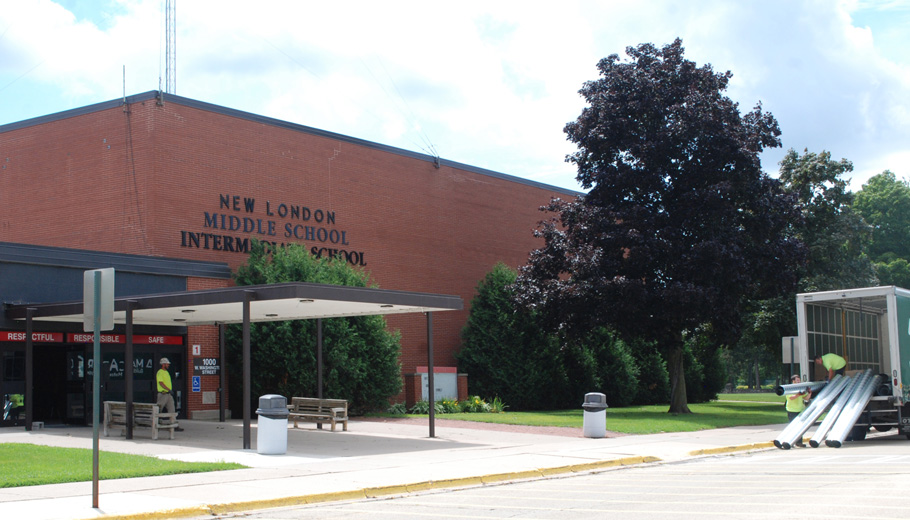
Inflationary challenges anticipated
By John Faucher
New London School Board members reviewed a favorable year-end budget forecast at its June 27 board meeting.
The fiscal year for Wisconsin school districts ended June 30.
District Business Services Director Joe Marquardt said a number of factors contributed to a projected surplus of $500,000 to $850,000 in the 2021-22 budget.
He said those numbers were still only estimates and the board would see final numbers after the July audit.
Some of the things factoring into the year-end favorable balance came in as the year progressed he said.
The district received $299,528 in one-time funds from the governor’s covid relief funds in December.
The district also received unemployment insurance reimbursement of $36,799 from the years 2019-21, and $137,181 in Emergency Connectivity Funds for technology purchases.
The district also received some funding earmarked for mental health initiatives and some ESSER II funding for hands-on projects.
Marquardt explained that the large range in the projected surplus was because they’ve only been invoiced $389,000 so far for the $5.7 million project underway at the intermediate/middle school.
He said preliminary work began in April and there was now a substantial amount of work taking place. Marquardt anticipated receiving billings for some of that June work within the next few weeks.
Funding for the $5.7 million ISMS project is coming from the district’s operating budget, referendum budget and Fund 46 budget over the next two fiscal years.
“It may be necessary for the board to take out a loan for a portion of the project during the 2022-23 year,” said Marquardt.
He said the board would have some positive options to consider for the year-end surplus at its July meeting.
“It does make sense in our initial recommendations to put this towards, at least part of it towards our project over at the intermediate middle school,” Marquardt said. “Any additional funds you commit to that project that were surplus funds can help decrease that balance that we need to pay for the project outside of a loan.”
When the district’s facilities improvement referendum passed in 2018 the board passed a resolution to borrow funds for that project up to five years after that date, through 2023.
Board Vice-President John Heideman asked about the district’s current debt level, and how much of it was locked in at lower rates already.
“We don’t have a lot of debt as a school district right now, so doing any refinancing probably would only kind of push out the obligation and not have a net positive return in the long run,” explained Marquardt.
When the district completed renovations at Parkview and Readfield the projects were done on a three-year note and the district has already made the second year of that payment.
Marquardt explained the way that the referendum was passed and how the projects were approved gave the board more flexibility and control over how to pay for and balance the budget.
Inflationary challenges
“I think trying to look at the budget with positivity is important because with the budget we know that we have some challenges with inflationary increases,” said Marquardt. “We’re all paying more at the pump; we’re all paying more for lots of things.”
Board Director Terry Wegner asked if there was any indication when the state will set school funding levels.
Marquardt explained all school districts both in the expiring budget year and next budget year do not have a per pupil inflationary increase.
He said the district continues to work through options to avoid borrowing and incorporating known variables into the 2022-23 budget.
Currently school districts are in the second year of the state’s biennium budget and this year’s state equalization aid numbers will not be finalized until Oct. 15.
At the July 11 board meeting, Marquardt provided an update on the Department of Public Instruction’s equalization aide estimate released July 1.
The estimate informs districts of an approximate aid amount ahead of the Oct. 15 certification date.
Marquardt wrote in his monthly report that the DPI’s estimate for New London was $16,687,721, which is 1.2 percent more ($200,000) than 2021-22.
State equalization aid is the primary source of revenue for the district’s operating budget.
“A key element to note is that more or less equalization aid does not mean more or less money to spend in the district’s budget,” Marquardt wrote.
“More equalization aid offsets the contribution by local taxpayers towards the general operating budget if the board levies to its full authority.”
He also noted that spending authority is determined by state-imposed revenue limits and New London is a low-revenue limit district.
Marquardt said he would keep the board posted as the district moved closer to the budget hearing in September when more definitive data became available.
